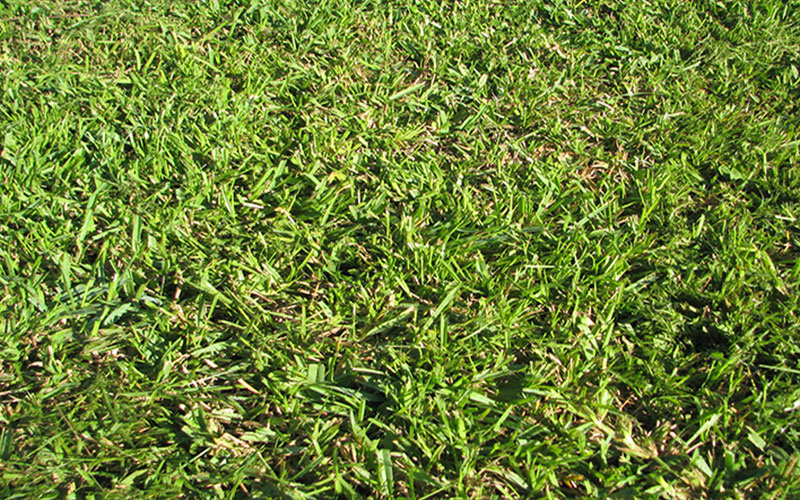Explore The CENTIPEDE SOD

This creeping perennial is well adapted to the sandy, acidic soils of low fertility and requires low maintenance. It spreads by stolons and has a coarse texture with short upright stems that grow to about 3-5 inches and requiring less mowing, survives in mild cold temperatures as long as there aren’t several hard freezes since it doesn’t go into a true dormancy and with light freezes will turn brown but as soon as the temperature rises it will recover and re-greens.
Learn More About CENTIPEDE SOD
Grass Watering
Being a low growing grass it is a favorite of busy lawn growers with a much longer period of days being added to the mowing cycle. Low fertilization (with low phosphorus) requirements can be met by a yearly application.
Irrigating on an “as-needed” basis is the best way to maintain any established, mature grass, as long as the proper amount of water is applied when needed. Irrigation is needed when leaf blades begin to fold up, wilt, or turn a blue-gray color, or when footprints remain visible after walking on the grass.
Centipede Planting Rates: Plant no less than one-fourth (1/4) pound per 1,000 square. One pound of seed covers 2,000 to 4,000 square feet and often produces a good lawn in two to three months of summer growth. We recommend planting 1/2 lb. per 1000 sq. feet for best results. Centipede is slow to establish / patience is required.
Irrigating on an “as-needed” basis is the best way to maintain any established, mature grass, as long as the proper amount of water is applied when needed. Irrigation is needed when leaf blades begin to fold up, wilt, or turn a blue-gray color, or when footprints remain visible after walking on the grass.
Centipede Planting Rates: Plant no less than one-fourth (1/4) pound per 1,000 square. One pound of seed covers 2,000 to 4,000 square feet and often produces a good lawn in two to three months of summer growth. We recommend planting 1/2 lb. per 1000 sq. feet for best results. Centipede is slow to establish / patience is required.
Nutrient Management
As a general rule, the first fertilizer application of the year should be early April in central Florida and mid-April in north Florida. In south Florida, fertilizer applications may be made throughout the year since growth is year-round.
University of Florida guidelines for lawn grass fertilization offer a range of fertilizer rates over which a particular species may be successfully maintained in the various regions of the state. These ranges account for the effect that localized microclimates can have on turf grass growth.
A range of rates allows for these environmental variations. An example of this would be a typical home lawn that is partially shaded and partially sunny. The grass growing in the shade needs less fertilizer than that growing in full sun.
University of Florida guidelines for lawn grass fertilization offer a range of fertilizer rates over which a particular species may be successfully maintained in the various regions of the state. These ranges account for the effect that localized microclimates can have on turf grass growth.
A range of rates allows for these environmental variations. An example of this would be a typical home lawn that is partially shaded and partially sunny. The grass growing in the shade needs less fertilizer than that growing in full sun.
Mowing Tip
Proper mowing practices are necessary to keep any lawn healthy and attractive. Standard Centipede Grass cultivars should be maintained at a height of 3.5–4 inches. Repeatedly mowing at lower heights increases the stress on the lawn, discourages deep rooting, increases the chance for scalping if a mowing event is missed or postponed due to weather, and may increase susceptibility to pest problems.
Maintaining the right height helps the grass develop a deep root system and gives a better appearance to the turf. No more than 1/3 of the leaf blades should be removed with any mowing. If possible, mowing height should be increased during periods of moisture stress or if the grass is growing in shade.
Maintaining the right height helps the grass develop a deep root system and gives a better appearance to the turf. No more than 1/3 of the leaf blades should be removed with any mowing. If possible, mowing height should be increased during periods of moisture stress or if the grass is growing in shade.

